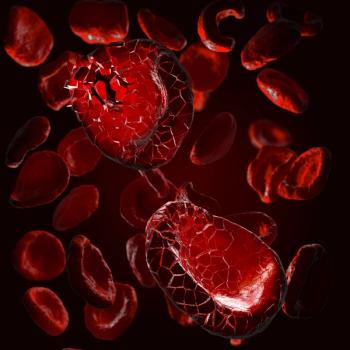
Oncology NEWS International
- Oncology NEWS International Vol 11 No 4
- Volume 11
- Issue 4
S-8184 Paclitaxel Emulsion Promising in Phase I Study
NEW YORK-A paclitaxel emulsion has shown antitumor activity with low toxicity in phase I data, Howard A. Burris III, MD, said at a special session on late-breaking developments at the Chemotherapy Foundation Symposium XIX. "This emulsion formulation of paclitaxel has the potential advantages of lower toxicity and higher efficacy than standard paclitaxel [Taxol]," said Dr. Burris, director of drug development, Sarah Cannon Cancer Center, Nashville.
NEW YORKA paclitaxel emulsion has shown antitumor activity with low toxicity in phase I data, Howard A. Burris III, MD, said at a special session on late-breaking developments at the Chemotherapy Foundation Symposium XIX. "This emulsion formulation of paclitaxel has the potential advantages of lower toxicity and higher efficacy than standard paclitaxel [Taxol]," said Dr. Burris, director of drug development, Sarah Cannon Cancer Center, Nashville.
The vitamin-E-based emulsion, known as S-8184 (Sonus Pharmaceuticals, Bothell, Washington), has a maximum tolerated dose three times greater than Taxol in preclinical studies, and tumor AUCs twice as high as those of Taxol at the same dose. Furthermore, when administered at higher doses than Taxol in animal models, it has shown increased antitumor activity.
To enhance tumor uptake, particles of this emulsion are manufactured in the size range of 60 to 200 nm. In addition, the emulsion contains a p-glycoprotein inhibitor, which may limit the ability of cancer cells to resist the cytotoxicity of the agent. Finally, the agent was developed without cremophor in an attempt to reduce hypersensitivity reactions, perhaps eliminate the need for premedication, and shorten infusion time. "Since the active ingredients in the emulsion and in Taxol are identical, then one would attribute the difference in maximum tolerated dose to the lack of cremophor and/or the improved delivery system (15-minute IV bolus)," Dr. Burris said.
He reported phase I clinical and pharmacokinetic data on S-8184. So far, investigators have treated 16 patients with lung, ovarian, breast, colorectal, or pancreatic cancer. All received bolus dosing every 3 weeks as a 15-minute IV push, using no steroid premedication. At a current dose cohort of 225 mg/m², the maximum tolerated dose has not yet been reached.
Results to date, for 14 evaluable patients, include one partial response in a patient with non-small-cell lung cancer treated for six cycles, one unconfirmed partial response in a patient with colorectal cancer treated for two cycles, and two patients with stable disease. All four of these patients had received prior taxane chemotherapy.
Dr. Burris said that he and his colleagues were "encouraged to see the responses" in patients who had previously received taxanes and in colorectal cancer, which does not usually respond to paclitaxel.
There have been no grade 3-4 neurotoxicity, febrile neutropenia, deaths, or drug-related serious adverse events. Grade 4 neutropenia was seen in two patients, both of whom remained on study. Infusion reactions included myalgia/arthralgia during infusion and mild, grade 1 hypersensitivity.
Articles in this issue
over 23 years ago
Virtual Shared Specimen Resource ‘Essential’over 23 years ago
DHA Conjugate Increases Paclitaxel Uptake by Tumor Cellsover 23 years ago
Letrozole Superior to Tamoxifen in Metastatic Breast Cancerover 23 years ago
HIV+ Veterans Have Higher Rates of Unusual Cancersover 23 years ago
Online Breast Cancer Support Groups Beneficialover 23 years ago
Survival Benefit With Capecitabine/Docetaxelover 23 years ago
FDA Approves Zometa for Cancer-Related Bone Complicationsover 23 years ago
New Blood Test for Early Ovarian Cancer in Clinical TrialsNewsletter
Stay up to date on recent advances in the multidisciplinary approach to cancer.


















































































